Unveiling the Secrets of J-Beauty
Want radiant skin and a unique aesthetic? This listicle unveils 10 key Japanese beauty trends transforming beauty routines globally. Discover the secrets behind J-Beauty's minimalist skincare routines, innovative techniques like skin lotion patting and lymphatic drainage massage, and popular concepts like mochi skin and byojaku makeup. Explore trending ingredients and the emphasis on barrier-first skincare. From essence-first routines to ofuro beauty rituals, learn how to incorporate these Japanese beauty trends into your routine.
1. J-Beauty Skincare Minimalism
J-Beauty skincare minimalism is a rising trend within the broader umbrella of Japanese beauty trends. Unlike the sometimes extensive 10-step routines popularized by K-beauty, the Japanese approach emphasizes simplicity and efficacy. This philosophy centers around using fewer, but higher-quality, products designed to work harmoniously with the skin’s natural processes. Instead of layering on multiple products to address various concerns, J-Beauty encourages a curated selection of targeted treatments that promote long-term skin health rather than offering quick fixes. This minimalist approach respects the skin's natural functions and fosters a sustainable, less-is-more attitude towards beauty. It's about achieving radiant skin through consistent, mindful skincare, not an overwhelming arsenal of products.
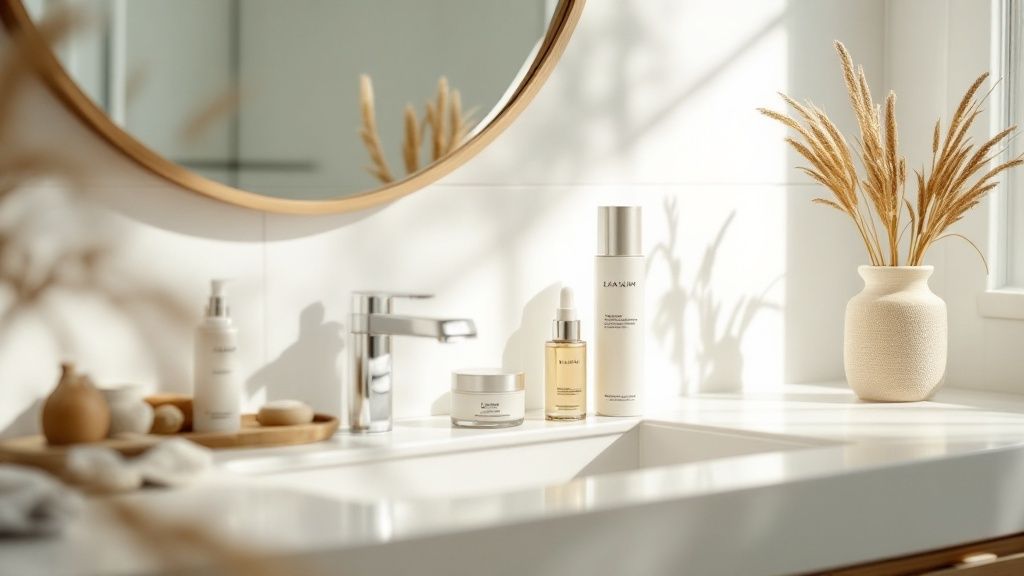
This trend prioritizes 3-5 step routines featuring highly concentrated formulations. These potent ingredients deliver maximum benefits without overloading the skin, minimizing the risk of irritation. This focus on quality over quantity also translates to a more considered and often cost-effective approach in the long run. While the initial investment in premium J-Beauty products might be higher, the reduced number of products needed can ultimately lead to savings.
J-Beauty minimalism deserves a prominent place on this list of Japanese beauty trends because it reflects a fundamental cultural value: appreciating the intrinsic beauty of simplicity. It offers a refreshing alternative to complex routines, making skincare accessible and enjoyable for everyone. Learn more about J-Beauty Skincare Minimalism for a deeper dive into this philosophy.
Features of J-Beauty Minimalism:
- Focus on 3-5 step routines: Streamlined routines that prioritize essential steps like cleansing, moisturizing, and sun protection.
- High-quality, concentrated formulations: Products packed with potent active ingredients for optimal results.
- Emphasis on skin health: Focuses on nurturing the skin’s natural barrier and promoting long-term health.
- Respect for skin's natural functions: Works with the skin, not against it, minimizing disruptions to its natural balance.
- Long-term approach to beauty: Emphasizes consistency and patience for sustainable results.
Pros:
- Time-efficient: Significantly faster than multi-step routines.
- Cost-effective (long-term): Fewer products to purchase.
- Less likely to cause irritation: Minimizes exposure to potentially irritating ingredients.
- Sustainable approach: Reduces product waste and packaging.
- Easy to maintain consistently: Simple routines are easier to stick with.
Cons:
- Premium products can be expensive: Initial investment can be higher.
- Results may take longer to appear: Gradual improvement rather than instant gratification.
- Limited product variety compared to K-beauty: Fewer options to choose from.
- May not address multiple skin concerns simultaneously: Requires a more targeted approach.
Examples of J-Beauty Minimalism in Action:
- Shiseido's 4-step essential routine: A classic example of a streamlined yet effective J-Beauty routine.
- DHC's oil cleansing method: This popular method uses a deep cleansing oil followed by minimal additional steps.
- SUQQU's streamlined luxury approach: High-end skincare that focuses on quality ingredients and simple routines.
Tips for Embracing J-Beauty Minimalism:
- Focus on double cleansing as a foundation: Thoroughly cleanse your skin to remove impurities and prepare it for subsequent products.
- Invest in a high-quality moisturizer appropriate for your skin type: Hydration is crucial for maintaining healthy skin.
- Choose products with key Japanese ingredients like rice bran, green tea, or camellia oil: These ingredients are known for their skin-benefiting properties.
- Consistency matters more than complexity: Stick to your routine diligently for optimal results.
Popularized By: Shiseido, SK-II, DHC, Shu Uemura, SUQQU, and beauty philosopher Chizu Saeki. These brands and individuals have championed the minimalist approach to skincare and helped popularize J-Beauty around the world. This trend is perfectly aligned with the growing consumer demand for simpler, more effective, and sustainable beauty practices.
2. Skin Lotion Patting (Patting Technique)
One of the most distinctive and effective Japanese beauty trends is the skin lotion patting technique. Unlike the Western habit of rubbing in lotions or using cotton pads, this method involves gently patting a watery lotion or essence (referred to simply as "lotion" in Japan) into the skin with your palms. This seemingly simple act is believed to enhance absorption, stimulate circulation, and maximize the product's effectiveness, making it a cornerstone of Japanese skincare rituals and a rising star in global beauty routines. This technique deserves its place on this list due to its unique approach to skincare and its proven efficacy in boosting hydration and overall skin health, appealing to both Japanese product enthusiasts and general skincare aficionados.
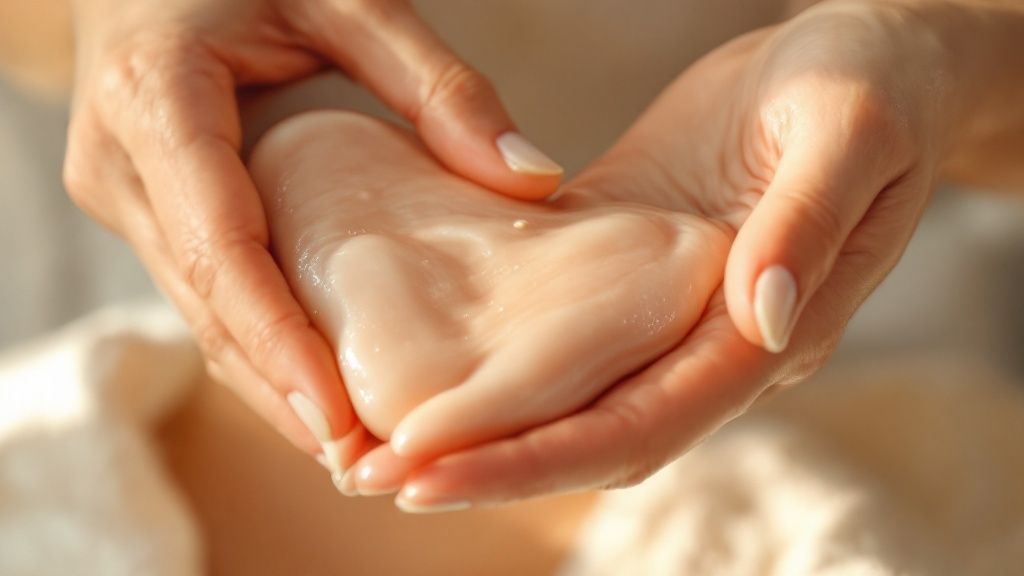
The essence of the patting technique lies in the gentle, rhythmic tapping motion. Rather than dragging or rubbing, the lotion is first warmed between the palms and then applied to the face using a series of light pats. It's often recommended to aim for 100-200 pats for optimal absorption. This technique can be used with various lotion consistencies, from thin, watery essences to slightly thicker hydrating lotions. It's typically performed after cleansing and acts as a crucial first step in hydration, preparing the skin for subsequent serums and moisturizers. Products like Hada Labo Gokujyun Hyaluronic Lotion, SK-II Facial Treatment Essence, and Kikumasamune High Moist Lotion are excellent examples of lotions often incorporated into this ritual. Beauty expert Chizu Saeki, Shiseido skincare specialists, Japanese beauty influencer Rumi Neely, and Kobayashi Pharmaceutical have all been instrumental in popularizing this technique.
Features of the Skin Lotion Patting Technique:
- Gentle tapping motion with palms: Avoids tugging and stretching of the delicate facial skin.
- Focus on warming product between hands first: Helps to activate the ingredients and enhance absorption.
- 100-200 pats recommended: Ensures thorough application and product penetration.
- Can be done with various lotion consistencies: Adaptable to different skin types and preferences.
- Often performed after cleansing: Serves as a crucial hydration step in the Japanese skincare routine.
Pros:
- Improves product absorption: The patting motion encourages the skin to drink in the lotion more effectively.
- Stimulates blood circulation: Leads to a healthy, radiant complexion.
- Creates a moment of mindfulness in skincare routine: Transforms skincare into a relaxing ritual.
- Doesn't pull or stretch skin like rubbing: Gentle and suitable for even sensitive skin (with careful practice).
- Helps products penetrate deeper layers: Delivers hydration and nutrients where they are needed most.
Cons:
- Time-consuming process: Requires a few minutes of dedicated patting.
- Requires practice to master technique: Finding the right rhythm and pressure takes time.
- May not be suitable for extremely sensitive skin: While generally gentle, some individuals with highly reactive skin may find it irritating. Start slowly and test on a small area first.
- Product can evaporate during patting if technique is too slow: Aim for a consistent and rhythmic pace.
Tips for Effective Skin Lotion Patting:
- Pour lotion into palms, not directly on face: Allows for even distribution and warming.
- Warm between hands momentarily before applying: Enhances absorption and efficacy.
- Start with gentle pressure and increase gradually: Avoid harsh patting that could irritate the skin.
- Focus on upward motions to counteract gravity: Promotes a lifted and toned appearance.
- Apply to slightly damp skin for enhanced absorption: This allows the lotion to spread more easily and penetrate deeper.
This Japanese beauty trend provides a unique approach to skincare, offering a blend of effective hydration and a moment of self-care. Whether you're a dedicated follower of Japanese beauty practices or simply looking to elevate your skincare routine, incorporating the skin lotion patting technique can be a rewarding experience for achieving a healthy and radiant complexion.
3. Mochi Skin
Among the most sought-after Japanese beauty trends is the pursuit of "mochi skin." This trend takes its name from the delectable Japanese rice cakes called mochi, known for their soft, plump, and bouncy texture. Mochi skin aims to replicate this desirable texture, resulting in a complexion that looks supple, dewy, and naturally luminous – radiating a healthy glow from within. Unlike the glass skin trend, which prioritizes a high-shine finish, mochi skin emphasizes a more subtle dewiness and a velvety-smooth texture that suggests optimal hydration and overall skin health. The focus is on achieving a naturally healthy appearance rather than one that looks artificially enhanced.
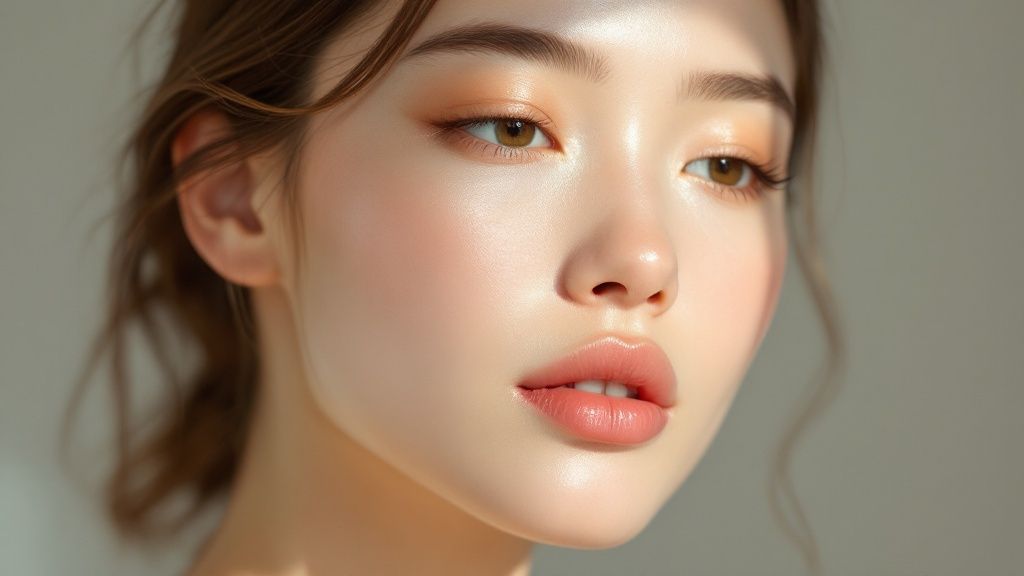
Mochi skin's emphasis on a naturally healthy complexion makes it a highly desirable Japanese beauty trend. Its accessibility across various skin types and age groups contributes to its popularity. The look is achieved through a dedicated skincare routine rather than heavy makeup application, focusing on deep hydration and nourishment. The hallmark features of mochi skin include a plump, bouncy texture, a subtle, natural dewiness, and a soft, velvet-like finish. This contrasts with the intense shine of glass skin, offering a more understated and arguably more achievable aesthetic.
Makeup artist Sada Ito, along with prominent Japanese cosmetic brands like Shiseido, Decorté, SUQQU, and THREE cosmetics, have popularized this trend. You can see examples of successful mochi skin in the radiant complexions of celebrities like actress Yui Aragaki and model Kiko Mizuhara, showcasing the trend's natural, effortless beauty.
Achieving Mochi Skin: Tips and Techniques
If you're interested in incorporating this Japanese beauty trend into your own routine, here are some actionable tips:
- Hydration is Key: Layer multiple lightweight hydrating products (like essences and serums) rather than relying on one heavy cream. This allows for better absorption and helps achieve that desirable plumpness.
- Ingredient Focus: Prioritize products containing hyaluronic acid, ceramides, and glycerin, all known for their humectant properties that draw moisture to the skin.
- Gentle Exfoliation: Regular, gentle exfoliation removes dead skin cells, allowing for better product penetration and promoting a smoother skin texture.
- Primer Power: Consider using a humectant-rich primer before applying makeup to create a smooth base and enhance the dewy finish.
- Skin Flooding: Explore the Japanese "skin flooding" technique, which involves applying multiple layers of a hydrating lotion (often referred to as a “lotion” but more like a toner) to saturate the skin with moisture.
Pros and Cons of Mochi Skin:
Pros:
- More achievable than glass skin for a wider range of skin types.
- Emphasizes long-term skin health over short-term makeup effects.
- Particularly flattering for mature skin, helping to minimize the appearance of fine lines and wrinkles.
- Suitable and appealing across different age groups.
- Doesn't necessitate heavy makeup application.
Cons:
- Requires a consistent and dedicated skincare routine for maintenance.
- Can be challenging to achieve for those with textured skin or severe acne.
- Results can vary based on individual skin type and condition.
- Maintaining optimal hydration can be difficult in dry climates.
Mochi skin deserves its place among leading Japanese beauty trends because it promotes a holistic approach to skincare. It's not just about achieving a specific look; it's about cultivating healthy, hydrated skin that radiates natural beauty. This trend appeals to those seeking a more sustainable and less makeup-dependent approach to beauty, aligning perfectly with a growing emphasis on wellness and self-care.
4. Bihaku (Brightening Skincare)
Bihaku is a cornerstone of Japanese beauty trends, representing a holistic approach to achieving luminous, even-toned skin. Unlike Western ideals that sometimes emphasize dramatic skin lightening, Bihaku focuses on enhancing the skin's natural radiance by addressing hyperpigmentation, sun damage, and dullness. This philosophy prioritizes long-term skin health and a naturally bright complexion rather than drastically altering one's natural skin color. It works by regulating melanin production, the pigment responsible for skin color, through gentle exfoliation and the use of ingredients that inhibit excessive melanin synthesis. This results in a more uniform and translucent complexion, revealing the skin's inner luminosity.
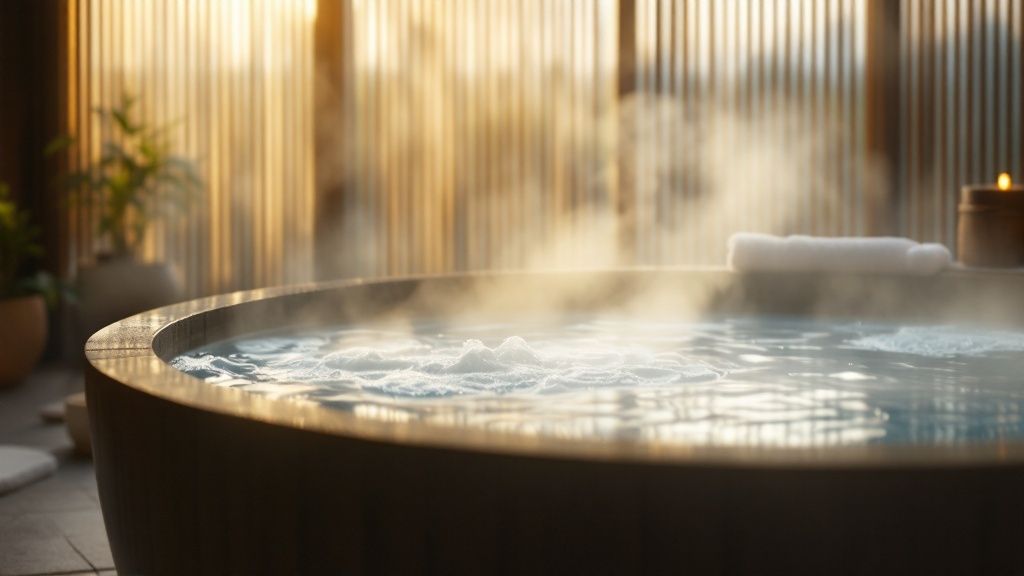
Bihaku’s emphasis on a comprehensive approach makes it a standout amongst Japanese beauty trends. It tackles uneven skin tone from multiple angles: antioxidant-rich ingredients protect against environmental damage, gentle exfoliation removes dead skin cells that can contribute to dullness, and targeted treatments address existing dark spots. This multifaceted strategy, combined with rigorous sun protection, helps prevent future pigmentation issues and maintain a bright, even complexion. Popular brands like SK-II, Shiseido, Sekkisei, Kose, Hada Labo, and Pola have championed this approach, creating product lines specifically designed for Bihaku. Examples include SK-II GenOptics Aura Essence, Shiseido White Lucent line, and Hada Labo Shirojyun Premium Whitening range.
When and why to use this approach:
Bihaku is ideal for anyone looking to address uneven skin tone, dark spots, sun damage, or general dullness. It’s particularly beneficial for those seeking a more radiant and youthful complexion through gentle, long-term skincare solutions. If you're concerned about harsh lightening agents, Bihaku provides a gentler alternative focused on promoting healthy skin function.
Pros:
- Addresses multiple causes of uneven skin tone.
- Generally gentler than Western lightening products.
- Focuses on skin health alongside aesthetic benefits.
- Comprehensive approach to pigmentation issues.
- Results in a more uniform and radiant complexion.
Cons:
- Requires consistent, long-term use for optimal results.
- Traditional formulations may contain controversial ingredients like hydroquinone (always check ingredient lists).
- Visible results can take months to appear.
- Maintaining a full Bihaku regimen can be expensive.
- Some Japanese Bihaku products may not be readily available outside of Japan.
Tips for incorporating Bihaku into your routine:
- Sun Protection is Paramount: Always pair brightening products with a broad-spectrum sunscreen with an SPF of 30 or higher, as sun exposure can exacerbate hyperpigmentation.
- Vitamin C Boost: Use a vitamin C serum in the morning for its potent antioxidant benefits, protecting against free radical damage and boosting the efficacy of sunscreen.
- Targeted Treatments: For stubborn dark spots, consider products containing tranexamic acid, a powerful ingredient known for its ability to inhibit melanin production.
- Gentle Brightening: Alpha-arbutin is a gentler alternative for brightening, derived from bearberry plants.
- Embrace Japanese Botanicals: Look for products containing traditional Japanese ingredients like rice extract and licorice root, known for their brightening and soothing properties.
By understanding the principles of Bihaku and incorporating these tips, you can harness the power of Japanese skincare to achieve a naturally luminous and healthy complexion.
5. Essence-First Skincare (FTE - First Treatment Essence)
Essence-first skincare, or the use of a First Treatment Essence (FTE), is a hallmark of Japanese beauty trends. This crucial step, performed immediately after cleansing, sets the stage for the rest of your skincare routine, maximizing the benefits of serums, moisturizers, and other treatments that follow. FTEs are lightweight, often watery, and packed with potent ingredients that prep your skin for optimal absorption. This practice distinguishes itself within Japanese skincare by prioritizing skin preparation and nourishment from the very first step.
So, how does it work? FTEs typically contain a high concentration of fermented ingredients like rice, yeast, or algae, which are rich in nutrients, antioxidants, and amino acids. These bio-active components work synergistically to balance the skin's pH, provide initial hydration with humectants, and deliver vital nutrients that enhance the skin's receptivity to subsequent products. Think of it as priming a canvas before painting; the FTE creates the ideal surface for your other skincare products to work their magic.
Features and Benefits:
- Water-like Consistency: Allows for rapid absorption, delivering ingredients deep into the skin without feeling heavy or sticky.
- Fermented Ingredients: Powerhouses of nutrients and antioxidants that promote skin health, brightness, and a healthy microbiome.
- Humectants: Attract and retain moisture, providing immediate and lasting hydration.
- pH Balancing: Restores skin's natural pH after cleansing, supporting a healthy skin barrier.
- Gentle Exfoliation: Some FTEs contain gentle exfoliants that help to remove dead skin cells, revealing brighter, smoother skin.
Pros and Cons:
- Pros: Enhances product absorption, provides immediate hydration, nourishes the skin microbiome, balances pH, may offer gentle exfoliation.
- Cons: Adds an extra step to the routine, can be expensive, benefits might be subtle at first, some fermented ingredients might cause sensitivities, requires consistent use for optimal results.
Examples of Popular FTEs:
- SK-II Facial Treatment Essence: A cult favorite known for its Pitera™ (a yeast ferment filtrate) that promises crystal-clear skin.
- Albion Skin Conditioner Essential: A soothing and hydrating essence, popular for its ability to balance and condition the skin.
- Kikumasamune High Moist Lotion: A budget-friendly option packed with rice ferment filtrate for hydration and brightening.
- Tunemakers Rice Bran Essence: Focuses on rice bran extract to provide gentle exfoliation and brightening.
Tips for Using FTEs:
- Damp Skin Application: Apply FTE to slightly damp skin for enhanced absorption.
- Patting Technique: Gently pat the essence into your skin rather than rubbing. This promotes better penetration and minimizes irritation.
- Refrigeration: Consider storing your FTE in the refrigerator during summer months for a refreshing and cooling effect.
- Skin Flooding: Layer multiple applications of FTE for a boost of hydration and a "glass skin" effect.
- Wait Time: Allow 30 seconds for the FTE to absorb before applying your next skincare product.
Why FTEs Deserve a Spot in Your Routine:
In the realm of Japanese beauty trends, the emphasis on a well-prepped canvas shines through. FTEs perfectly embody this principle. By optimizing your skin's condition from the first step, they ensure that subsequent products perform at their peak, leading to a healthier, more radiant complexion. While it may add an extra step, the long-term benefits of enhanced product efficacy, improved hydration, and balanced skin make FTEs a worthwhile investment for anyone seeking to embrace the meticulous yet effective approach of Japanese skincare. The subtle yet transformative power of the FTE distinguishes it as a core component of a truly effective Japanese skincare routine.
6. Ofuro Beauty Rituals
Ofuro beauty rituals represent a cornerstone of Japanese beauty trends, transforming the everyday act of bathing into a luxurious and therapeutic experience. More than just cleansing, ofuro is a holistic ritual deeply rooted in Japanese culture, prized for its ability to enhance both skin health and mental well-being. This approach elevates bathing from a mundane chore into a cherished act of self-care, making it a worthy addition to any Japanese beauty enthusiast's routine.
The ofuro experience centers around extended soaking in comfortably warm (not hot) water, allowing the body and mind to unwind. This warmth opens pores, preparing the skin for deeper cleansing and improved absorption of beneficial ingredients. The practice often incorporates traditional Japanese bath additives, such as mineral-rich salts, aromatic oils, and soothing botanicals, further enhancing the therapeutic benefits. The key lies in the post-bath routine: applying moisturizer immediately after emerging from the water seals in hydration while the skin is still damp and receptive, maximizing its effectiveness.
Several variations on the traditional ofuro exist, showcasing the rich history and diverse applications of this practice. Hinoki wood bath rituals, for example, utilize the fragrant Japanese cypress wood, known for its calming and antibacterial properties. Yuzu citrus winter solstice baths offer a refreshing and invigorating experience, while milk baths with rice bran soften and nourish the skin. For those seeking a more intensive treatment, hot spring mineral treatments (onsen) provide a wealth of therapeutic benefits. You can learn more about Ofuro Beauty Rituals to explore the various aspects of this tradition.
To incorporate elements of ofuro into your own routine, try adding bath salts infused with Japanese minerals like Kurobizen or Hokkaido sea salt. During the winter months, infuse your bath with the bright scent of yuzu fruit for improved circulation. Gentle body brushing before bathing enhances exfoliation and prepares the skin for deeper cleansing. Immediately after bathing, while your skin is still damp, apply your favorite body oil to lock in moisture. For an authentic aromatherapeutic experience, consider incorporating Japanese cypress (hinoki) bath products.
Pros:
- Opens pores for deeper cleansing and better product absorption.
- Improves circulation, facilitating nutrient delivery to the skin.
- Creates a meditative and relaxing self-care ritual.
- Relieves muscle tension, which can contribute to facial tension.
- Helps skincare products absorb more effectively.
Cons:
- Can be a time-consuming process.
- Extended soaking is not recommended for certain skin conditions.
- Traditional bath additives may be difficult to source outside of Japan.
- Not suitable for daily practice for all skin types.
- Requires significant water usage.
Examples of products and brands popularizing this Japanese beauty trend include onsen hot spring resorts, Amayori bath products, SABON Japan, Morihata Binchotan charcoal products, and Kracie Naive bath powders. These offerings provide a glimpse into the diverse world of ofuro and make it accessible to a wider audience. By embracing ofuro, you can experience the profound benefits of this time-honored Japanese beauty ritual and elevate your self-care routine.
7. Facial Massage and Lymphatic Drainage Techniques
Among the most sought-after Japanese beauty trends is the practice of facial massage and lymphatic drainage techniques. This isn't just a fleeting fad; it's a deeply rooted practice that emphasizes a holistic approach to skincare, working from the inside out to promote a naturally radiant and youthful complexion. These techniques, a cornerstone of J-Beauty, go beyond simply applying topical products, focusing instead on manipulating the underlying facial muscles and lymphatic system for long-term benefits. This makes it a deserving addition to any list of top Japanese beauty trends.
So how does it work? Japanese facial massage focuses on manual lymphatic drainage, muscle toning, and circulation enhancement through specific hand movements and sometimes tools like gua sha or facial rollers. By stimulating the lymphatic system, these techniques aim to reduce puffiness and promote a healthy glow by removing waste and toxins. The targeted pressure point techniques, often incorporating traditional meridian massage concepts, help to further sculpt and define facial contours. This approach addresses underlying structural issues rather than simply masking imperfections, which is why it resonates with many Japanese skincare enthusiasts.
Several popular methods highlight the effectiveness of Japanese facial massage. The Tanaka Face Massage method, developed by facial massage expert Yukuko Tanaka, is renowned for its lifting and contouring effects. Mikiri Hasegawa's Zogan massage technique, specifically targeting nasolabial folds, is another prominent example. Even large beauty brands like Shiseido have incorporated these principles into their facial massage tutorials, further solidifying the technique's place within mainstream Japanese beauty trends. The popularity of tools like Mt. Fuji Beauty tools and ReFa facial rollers also demonstrates the widespread adoption of this practice.
Features and Benefits:
- Emphasis on upward strokes against gravity: This helps to lift and tone facial muscles, counteracting the effects of aging.
- Targeted pressure point techniques: Stimulates specific points to improve circulation and energy flow.
- Incorporation of traditional meridian massage concepts: Draws upon ancient Eastern medicine principles for holistic wellness.
- Use of specialized tools like jade rollers or massage wands: Enhances the massage experience and provides additional benefits like cooling and depuffing.
- Integration with skincare product application: Improves product absorption and efficacy.
Pros:
- Helps reduce facial puffiness
- Improves product absorption
- Can temporarily tighten facial contours
- Promotes relaxation and stress reduction
- Cost-effective alternative to professional treatments
Cons:
- Requires consistent practice for lasting results
- Proper technique takes time to master
- Not recommended for active breakouts or certain skin conditions
- Results are temporary and cumulative
- Can cause redness if performed too aggressively
Tips for Incorporating Facial Massage into Your Routine:
- Always use a facial oil or serum to provide slip: This prevents friction and allows for smoother movements.
- Focus on upward and outward motions: This helps to lift and drain.
- Start with gentle pressure and gradually increase: Avoid applying too much pressure, especially when starting.
- Learn to identify your lymph nodes for proper drainage sequence: This ensures effective lymphatic drainage.
- Combine with breathing exercises for enhanced relaxation benefits: Deep breathing enhances the calming effects of the massage.
- Try refrigerated jade or rose quartz tools for added depuffing: The cooling sensation further reduces puffiness and inflammation.
Whether you're a seasoned skincare enthusiast or a curious beginner, incorporating Japanese facial massage and lymphatic drainage techniques into your routine can offer a range of benefits, from reduced puffiness and improved circulation to a more sculpted and youthful appearance. By understanding the principles and techniques behind this popular Japanese beauty trend, you can harness its power to achieve a naturally radiant and healthy complexion.
8. Ingredient-Focused Purity (Clean Formulations)
Ingredient-focused purity, a rising star among Japanese beauty trends, centers around the concept of "less is more." This approach emphasizes high-quality, concentrated active ingredients while stripping away unnecessary additives, fillers, and potential irritants. It’s a philosophy that values purposeful formulation where each ingredient plays a specific, beneficial role, respecting the skin's natural barrier and promoting long-term health. This trend aligns perfectly with the growing global demand for transparency and efficacy in skincare.
This meticulous approach to formulation results in products with short, focused ingredient lists, often highlighting botanically-derived actives. Common sensitizers like artificial fragrances, dyes, and certain preservatives are typically avoided. The trend also sees a resurgence of traditional Japanese ingredients, like rice bran extract, sake, and camellia oil, now backed by modern scientific research. Learn more about Ingredient-Focused Purity (Clean Formulations) to delve deeper into the world of clean Japanese skincare.
Why is this a noteworthy Japanese beauty trend? Because it reflects a deep-seated cultural appreciation for simplicity, purity, and efficacy. This philosophy extends beyond skincare to encompass a holistic lifestyle approach, and it's a key reason why Japanese beauty products are gaining international recognition. The emphasis on ingredient quality and minimal processing often leads to gentle yet powerful formulations, ideal for even the most sensitive skin types.
Features and Benefits:
- Short, focused ingredient lists: Makes it easier to identify potential triggers and understand what each ingredient does.
- Emphasis on botanically-derived actives: Harnesses the power of nature with ingredients known for their skin-beneficial properties.
- Avoidance of common sensitizers: Minimizes the risk of irritation, redness, and allergic reactions.
- Traditional Japanese ingredients with modern research backing: Combines ancient wisdom with scientific validation for optimal results.
- Fragrance-minimal or fragrance-free options: Caters to sensitive skin and those who prefer unscented products.
Pros:
- Reduced risk of irritation and allergic reactions
- Easier to identify potential problem ingredients
- Often more environmentally sustainable due to mindful sourcing and reduced packaging
- Aligns with growing consumer demand for transparency
- Suitable for sensitive skin types
Cons:
- May lack the luxurious sensorial experience (rich textures, strong fragrances) that some users enjoy.
- Can be more expensive due to the use of high-quality, concentrated ingredients.
- May have a shorter shelf life without certain preservatives, requiring careful storage.
- Often comes with premium pricing reflecting the research and development involved.
- May be less readily available globally compared to mainstream brands.
Examples of Ingredient-Focused Purity in Action:
- Matsuyama: Known for its minimal ingredient formulations focusing on key actives.
- Tunemakers: Offers single-ingredient serums allowing for personalized skincare routines.
- Fancl: A pioneer in preservative-free skincare, emphasizing freshness and gentleness.
- Minon Aminomoist: A sensitive skin line designed with a focus on minimizing irritation.
- Hada Labo: Features simple yet effective hydrating formulas with hyaluronic acid.
- THREE Balancing skincare line: Employs botanical extracts and avoids harsh chemicals.
Tips for Embracing Ingredient-Focused Purity:
- Look for products featuring ingredients like rice bran extract, sake, camellia oil, and green tea.
- Consider fragrance-free versions of popular products to minimize potential irritation.
- Research traditional Japanese ingredients like indigo, pearls, and seaweed to discover their unique benefits.
- Pay attention to product pH levels in addition to ingredients to ensure compatibility with your skin.
- Start with simpler formulations when introducing new products to your routine.
By understanding the principles of ingredient-focused purity, you can navigate the world of Japanese beauty trends and curate a skincare routine that prioritizes both efficacy and gentleness. This trend is not just about clean beauty; it’s about a conscious approach to skincare that respects your skin’s natural balance and promotes long-term health.
9. Barrier-First Approach to Skincare
The barrier-first approach is a cornerstone of Japanese beauty trends, emphasizing the importance of a healthy skin barrier as the foundation for beautiful skin. Instead of immediately targeting specific skin concerns with potent actives, this philosophy prioritizes strengthening and maintaining the skin's natural protective layer. This method recognizes that a compromised barrier can lead to a host of problems, including dryness, sensitivity, inflammation, and breakouts. By focusing on nurturing and reinforcing this crucial shield, the barrier-first approach aims to create a resilient canvas that is naturally radiant and less susceptible to issues.
This approach works by replenishing and supporting the components that make up a healthy skin barrier. These include ceramides, lipids, and a balanced skin microbiome. Ceramides act like the "mortar" between skin cells, holding them together and preventing moisture loss. Lipids provide essential oils that maintain hydration and suppleness. A healthy microbiome, the community of microorganisms living on the skin, helps protect against harmful bacteria and maintain balance.
Features of the Barrier-First Approach:
- Ceramide-rich formulations: Products often feature multiple types of ceramides to mimic the skin's natural composition.
- Gentle cleansing: Harsh cleansers can strip the skin of its natural oils and disrupt the barrier. Gentle, pH-balanced cleansers are preferred.
- pH-balanced products: Maintaining the skin's slightly acidic pH (around 5.5) is crucial for optimal barrier function.
- Avoidance of harsh actives: While some actives can be beneficial, the barrier-first approach generally avoids those known to compromise the barrier, especially when it's already damaged.
- Layering techniques: Applying thin layers of hydrating products allows for better absorption and helps lock in moisture.
Pros:
- Addresses root causes: By focusing on the barrier, this approach can address the underlying causes of many skin concerns.
- Effective for sensitive skin: It's particularly beneficial for sensitive and reactive skin types prone to irritation.
- Resilience against stressors: A strong barrier better protects the skin from environmental aggressors like pollution and UV damage.
- Reduces transepidermal water loss (TEWL): This helps maintain hydration and prevents dryness.
- Minimizes vulnerability: A healthy barrier reduces the risk of irritation, infection, and inflammation.
Cons:
- Less "active" feeling: Compared to treatment-focused routines, the barrier-first approach might feel less intensive.
- Gradual results: Barrier repair takes time and consistency. Don't expect overnight miracles.
- Requires adherence: It requires commitment to the principles of gentle cleansing, hydration, and avoiding harsh ingredients.
- Not sufficient for targeted concerns: While a healthy barrier is essential, it may not be enough to address specific issues like hyperpigmentation or deep wrinkles. In these cases, targeted treatments can be incorporated after the barrier is strengthened.
- Integrating actives can be challenging: Introducing active ingredients requires careful consideration and monitoring to avoid disrupting the barrier.
Examples of Barrier-Focused Japanese Skincare Products:
- Curel ceramide-focused skincare line
- Matsuyama Hadauru ceramide products
- Mochitto sensitive skin line
- Muji Sensitive Skin series
- Hada Labo
- Dr. Ci:Labo
Tips for Implementing the Barrier-First Approach:
- Choose cleansers with a pH around 5.5.
- Look for products containing multiple ceramide types (e.g., Ceramide NP, Ceramide AP, Ceramide EOP).
- Consider incorporating fermented ingredients like sake or kombucha for microbiome support.
- Layer thin hydrating products (toner, essence, serum) rather than one thick cream.
- Allow products to fully absorb between layers.
- Be patient with results—barrier repair takes time and consistent effort.
Why This Approach Deserves its Place in Japanese Beauty Trends:
The barrier-first approach perfectly embodies the Japanese beauty philosophy of prioritizing long-term skin health over quick fixes. It's a holistic approach that recognizes the interconnectedness of skin health and emphasizes prevention and gentle care. This trend has gained popularity amongst Japanese skincare enthusiasts and is now influencing global beauty routines, appealing to those seeking a more sustainable and effective way to achieve healthy, radiant skin. It's a testament to the Japanese emphasis on mindful skincare and achieving beauty from within.
10. Byojaku Makeup (Sickly-Cute Aesthetic)
Byojaku makeup, a unique entry among popular Japanese beauty trends, centers around a fragile, almost ethereal aesthetic. The look intentionally cultivates a delicate, "sickly," yet endearing appearance. Think less vibrant health and more gentle vulnerability. This subversive trend challenges conventional beauty standards, romanticizing a look of almost melancholic beauty.
Byojaku achieves this distinctive look through several key features: a matte, pale base; strategically placed blush that mimics a fever flush across the nose bridge and under the eyes; downturned eyeshadow giving a tired impression; glossy, sometimes reddish eyelids; muted lip colors; and soft, straight, or downturned eyebrows.
The appeal of Byojaku lies in its distinctive and recognizable aesthetic. It offers a canvas for creative expression through the subversion of traditional beauty norms and can be adapted to varying levels of intensity. The style often creates a youthful, vulnerable appearance, particularly flattering for certain eye shapes.
Examples of successful Byojaku makeup can be seen in the signature look of Japanese model Aira Mihana, within the pages of Japanese fashion magazines like LARME and Melt, and even on stage with musician Seiko Oomori’s performance makeup.
Byojaku makeup often incorporates elements of high fashion, particularly from well-known Japanese and international brands. To explore some of the top designer brands for women and find inspiration for your Byojaku looks, check out this resource: designer brands for women. Source: Designer Brands for Women: Top Trends 2025 from Feinheit FZ LLC
Want to try the look yourself? Here are some tips:
- Base: Use a foundation one or two shades lighter than your natural skin tone.
- Blush: Apply a coral or red blush across the bridge of your nose and under your eyes.
- Eyes: Create a slightly downturned eye shape with eyeshadow placement and consider using a glossy eyeshadow or clear eye gloss on the lids.
- Lips: Opt for a clear lip gloss with a slight tint rather than an opaque lipstick.
- Brows: Keep your eyebrows straight or slightly downturned.
While Byojaku allows for a unique form of self-expression, it’s important to be aware of the potential downsides. This look isn't typically considered appropriate for professional settings and can be misinterpreted in cultures unfamiliar with the aesthetic. Achieving an authentic Byojaku look often requires specific products, and it can be challenging to balance the look without appearing genuinely unwell. The trend has also faced criticism for potentially romanticizing illness.
Despite these potential drawbacks, Byojaku's popularity persists. Its unique approach to beauty, combined with its adaptability and evocative nature, secures its place among prominent Japanese beauty trends. Whether you're a dedicated follower of Japanese beauty or simply looking to experiment with something new, Byojaku offers a fascinating exploration of alternative aesthetics.
Japanese Beauty Trends: 10-Point Comparison
| Trend | 🔄 Implementation Complexity | ⚡ Resource Requirements | 📊 Expected Outcomes | 💡 Ideal Use Cases | ⭐ Key Advantages |
|---|---|---|---|---|---|
| J-Beauty Skincare Minimalism | Low: 3-5 steps | Moderate: High-quality concentrated products | Long-term skin health with simple routine | Daily minimalist skincare | Time-efficient, sustainable approach |
| Skin Lotion Patting Technique | High: Technique-intensive | Moderate: Requires practice and steady application | Enhanced absorption and improved circulation | Hydration-focused routines | Boosts product efficacy through better absorption |
| Mochi Skin | Moderate: Layering required | Moderate: Involves multiple hydrating layers | Plump, naturally dewy and bouncy skin | Suitable for diverse age groups | Achievable, natural glow emphasizing skin health |
| Bihaku (Brightening Skincare) | Moderate: Consistency needed | High: Premium treatments and targeted actives | Even-toned, naturally radiant complexion | Addressing pigmentation and dullness | Gentle yet effective brightening without harsh agents |
| Essence-First Skincare (FTE) | Moderate: Extra step in routine | High: Premium, nutrient-rich formulations | Optimized hydration and improved product absorption | Layered skincare routines | Enhances efficacy of follow-up products |
| Ofuro Beauty Rituals | High: Time-consuming ritual | High: Requires special additives and extended soaking | Deep cleansing with holistic relaxation | Spa-like, meditative self-care | Holistic wellness and enhanced skincare absorption |
| Facial Massage & Lymphatic Drainage | High: Technique-dependent | Moderate: Needs tools and dedicated time | Reduced puffiness and improved facial contours | Anti-aging and relaxation treatments | Non-invasive, cost-effective improvement |
| Ingredient-Focused Purity (Clean Formulations) | Low: Simple, focused ingredient lists | High: Premium, transparently sourced actives | Reduced irritation and clearer skin | For sensitive skin and ingredient-conscious users | Transparency and lower allergenic risk |
| Barrier-First Approach to Skincare | Moderate: Requires careful layering | Moderate: Specialized barrier-support products | Strengthened skin barrier with better moisture retention | For sensitive or compromised skin | Addresses root causes with resilient protection |
| Byojaku Makeup (Sickly-Cute Aesthetic) | Moderate: Artistic, skill-based | Moderate: Demands specific, niche products | Distinctive, intentionally vulnerable look | Creative, subversive makeup styles | Unique, signature styling that challenges norms |
Embrace the Essence of Japanese Beauty
From minimalist skincare routines and innovative lotion-patting techniques to the pursuit of mochi skin and the bihaku brightening phenomenon, Japanese beauty trends offer a holistic approach to skincare and makeup. We've explored ten key trends, including the essence-first philosophy, traditional ofuro rituals, lymphatic drainage massage, and the emphasis on clean, ingredient-focused formulations. Mastering these concepts allows you to move beyond mere cosmetics and embrace a mindful, self-care-centric approach to beauty that prioritizes a healthy skin barrier and cultivates a natural, radiant glow. Whether you're drawn to the dewy, glass-like complexion of mochi skin or the ethereal beauty of byojaku makeup, incorporating these Japanese beauty trends can transform your routine and enhance your overall well-being.
Ready to experience the transformative power of Japanese beauty firsthand? Explore authentic J-Beauty products and curate your perfect routine with Buy Me Japan, your gateway to the latest and greatest in Japanese beauty trends. Discover everything from innovative skincare to unique makeup must-haves, all delivered directly from Japan.
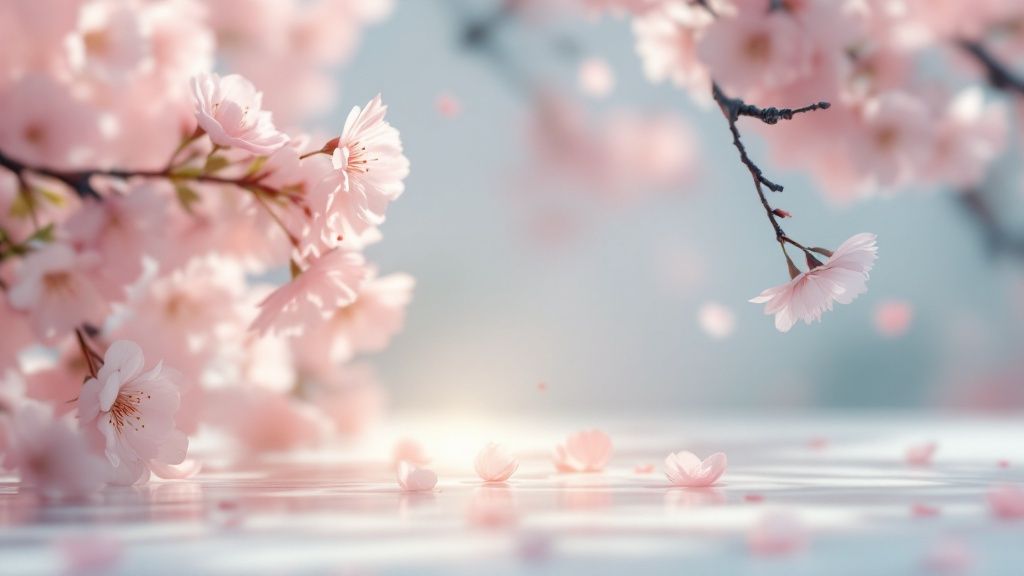
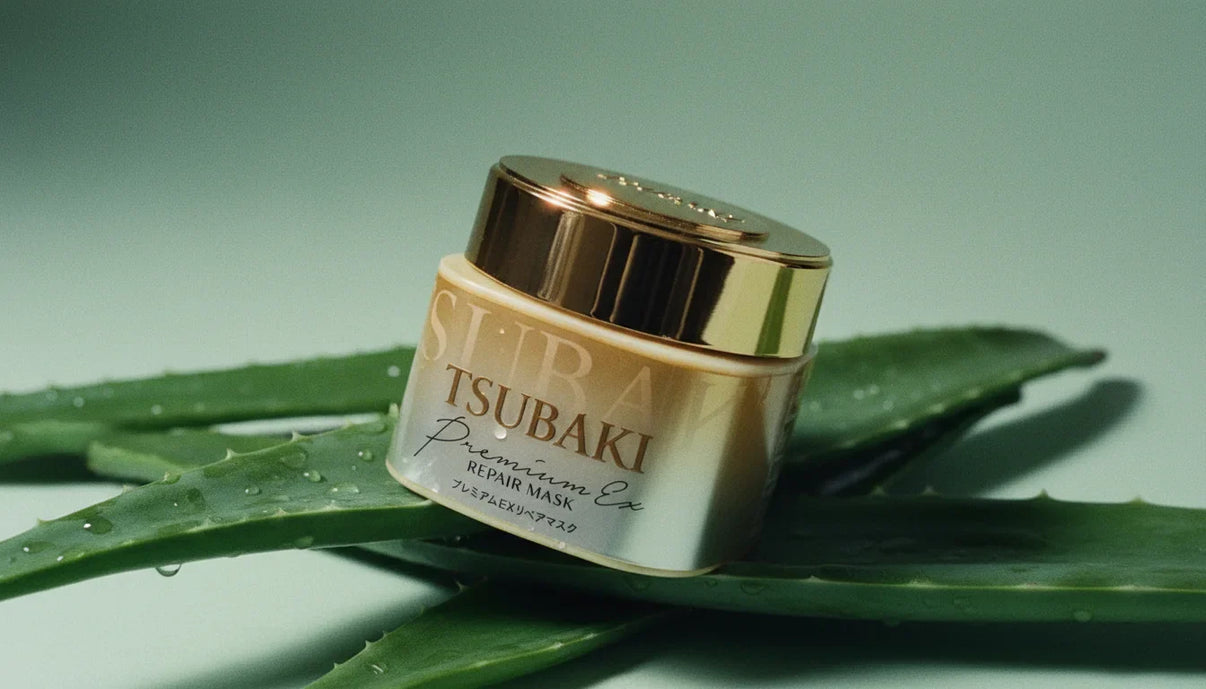

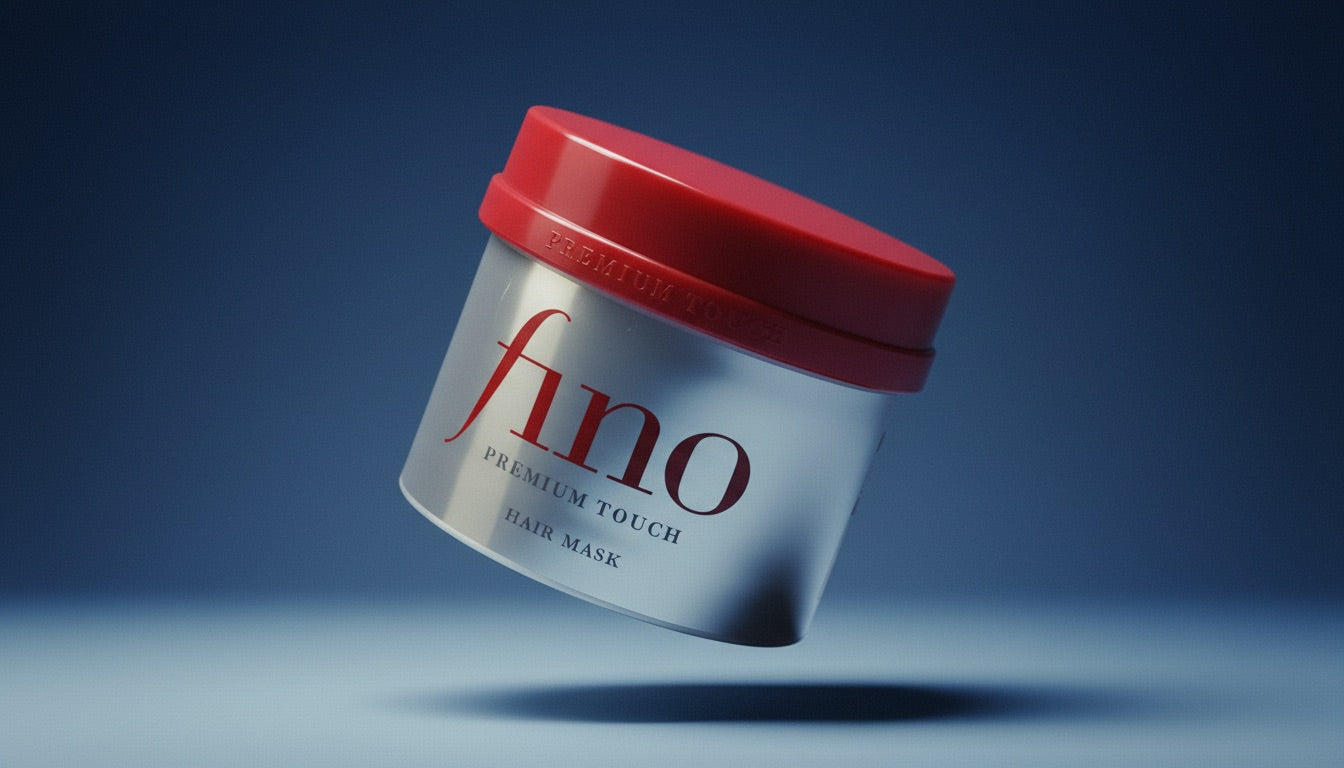
Share:
Japanese Beauty Secrets: Radiant Skin Revealed
Top 7 Japanese Moisturizer for Dry Skin Picks